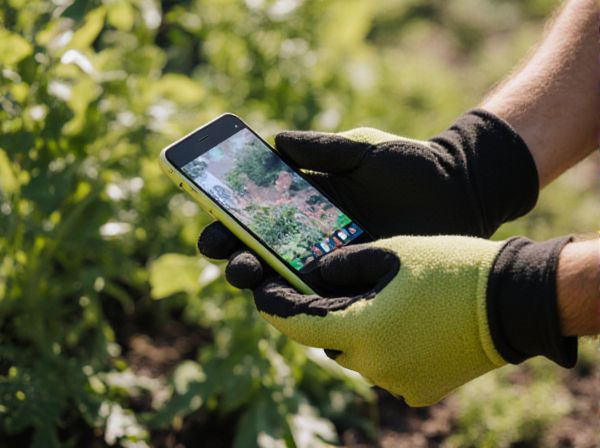
Zone 1 vs Zone 5 Illustration
Zone 1 in permaculture refers to the area closest to the home where daily activities like kitchen gardens and herb beds are located for easy access. Zone 5 is a wild, unmanaged area used primarily for observation and conserving natural ecosystems and biodiversity. The contrast between Zone 1 and Zone 5 emphasizes the gradient from intensive cultivation to natural preservation within a permaculture design.
Table of Comparison
| Aspect | Zone 1 | Zone 5 |
|---|---|---|
| Definition | Closest zone, intensive daily use | Wild, untouched natural area |
| Distance from Home | 0-50 meters | Beyond practical daily access |
| Purpose | Kitchen garden, herbs, salad greens | Conservation, wildlife habitat |
| Human Intervention | High, daily maintenance | Minimal to none, natural processes |
| Examples | Raised beds, compost bins, greenhouses | Native forest, wild meadows |
| Ecological Role | Food production, resource management | Biodiversity preservation, ecosystem balance |
| Soil Management | Frequent soil amendments | Natural soil development |
Understanding Permaculture Zones: An Overview
Zone 1 in permaculture refers to the area closest to the home, designed for intensive cultivation of herbs, vegetables, and daily-use plants to maximize efficiency and minimize effort. In contrast, Zone 5 represents a natural or wild area, left undisturbed to encourage biodiversity, wildlife habitat, and ecosystem regeneration. Understanding these zones helps optimize land use by balancing human intervention with natural processes for sustainable living.
Defining Zone 1 and Zone 5 in Permaculture
Zone 1 in permaculture is the area closest to the home, dedicated to daily-use plants like herbs and vegetables that require frequent attention and harvesting. Zone 5 serves as the wild, natural zone, left largely undisturbed to support biodiversity, wildlife habitat, and ecological balance. These zones represent the spectrum of human intervention, with Zone 1 emphasizing intensive management and Zone 5 prioritizing conservation and natural processes.
Key Differences Between Zone 1 and Zone 5
Zone 1 in permaculture is the area closest to the home, designed for high-maintenance, frequently visited plants such as herbs, vegetables, and salad greens, requiring daily care and harvesting. Zone 5 represents the wild, natural ecosystem with minimal human intervention, promoting biodiversity, wildlife habitat, and ecological balance. The key difference lies in the level of human management and accessibility, with Zone 1 being intensively managed for productivity and Zone 5 preserved for conservation and natural processes.
Typical Elements Found in Zone 1
Zone 1 in permaculture consists of areas closest to the home, designed for high-maintenance plants and daily use elements such as kitchen herb gardens, salad greens, compost bins, and rainwater collection systems. This zone prioritizes easy access to frequently harvested plants and essential resources like chickens or small livestock for eggs and pest control. Efficient placement of Zone 1 elements enhances sustainability by reducing energy and time spent on garden maintenance.
Typical Elements Found in Zone 5
Zone 5 in permaculture is characterized by a wild, natural area where minimal human intervention occurs, serving as a vital sanctuary for native plants and wildlife. Typical elements found in Zone 5 include dense forests, native trees, wildflowers, and diverse ecosystems that support biodiversity and natural regeneration. This zone acts as a critical buffer, promoting ecological balance and providing resources such as wild edibles, medicinal plants, and habitat for pollinators and wildlife.
Design Considerations for Zone 1
Zone 1 in permaculture design emphasizes high accessibility and intensive care, typically located nearest to the home for daily use plants like herbs, salad greens, and medicinal crops. This zone requires detailed planning to optimize sunlight exposure, water access, and soil fertility to support frequent harvesting and maintenance activities. Efficient placement of pathways and water catchment systems enhances productivity and reduces labor in managing this critical, high-energy-use area.
Design Strategies for Zone 5
Zone 5 in permaculture design represents the wilderness area with minimal human intervention, emphasizing biodiversity conservation and natural ecosystem processes. Design strategies for Zone 5 prioritize native species protection, habitat restoration, and wildlife corridors to maintain ecological balance and resilience. Limited access and passive observation techniques ensure the preservation of this critical zone for research and natural regeneration.
Zone 1 vs Zone 5: Maintenance and Accessibility
Zone 1 in permaculture design requires high maintenance and daily accessibility, as it includes elements like kitchen gardens and herb beds that need frequent care and harvesting. Zone 5 is a wilderness area left largely undisturbed, demanding minimal maintenance and offering habitat for wildlife while promoting natural regeneration. Prioritizing ease of access for Zone 1 supports efficient functioning of the garden, whereas Zone 5 enhances ecological balance with limited human intervention.
Choosing the Right Plants for Each Zone
Zone 1 in permaculture requires high-maintenance plants that provide daily yields, such as herbs, leafy greens, and vegetables close to the home for easy access and frequent harvesting. Zone 5 is a wild, unmanaged area mostly left for native plants, wildlife habitat, and natural ecosystem processes, making it ideal for preserving biodiversity and planting native species that thrive without intervention. Selecting appropriate plants for each zone enhances sustainable productivity and ecosystem balance in permaculture design.
Integrating Zone 1 and Zone 5 for a Thriving Garden
Integrating Zone 1 and Zone 5 in permaculture creates a dynamic balance between intensive cultivation and wild ecosystem preservation, enhancing biodiversity and soil health. Zone 1, with its daily-use plants like herbs, vegetables, and companion species, benefits from the natural pest control and pollination services provided by the undisturbed wild species in Zone 5. This synergy optimizes resource efficiency, promotes sustainable food production, and fosters a resilient garden capable of withstanding environmental stresses.
Zone 1 vs Zone 5 Infographic

 gardendif.com
gardendif.com